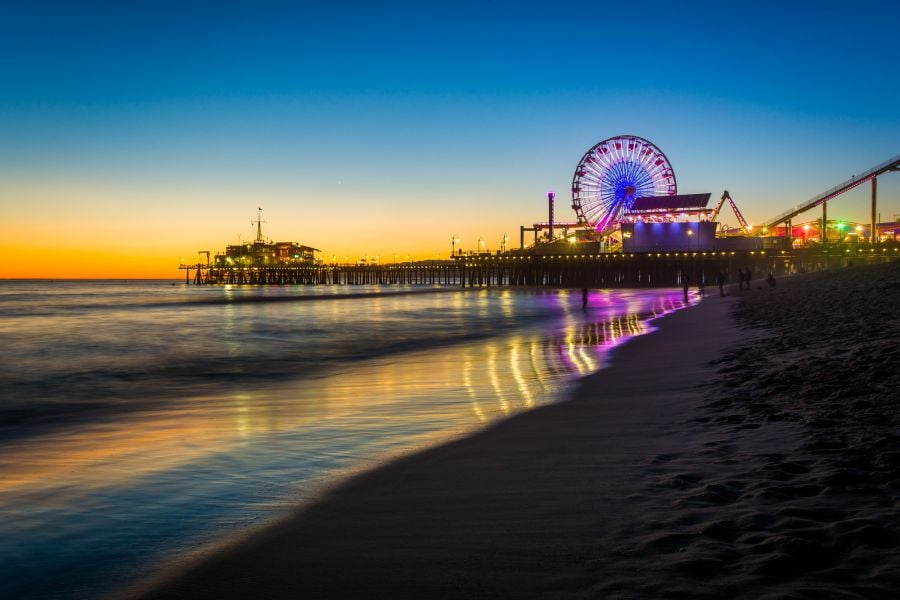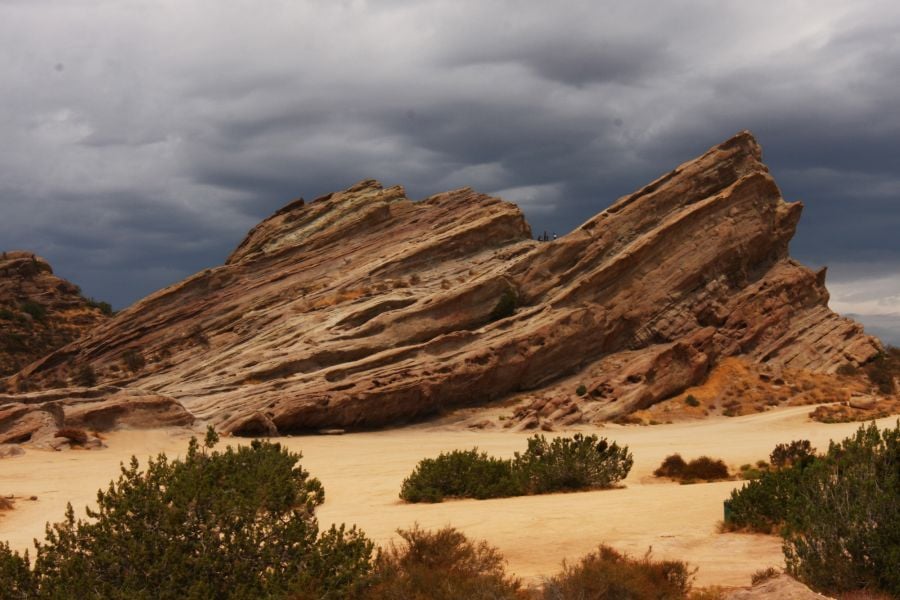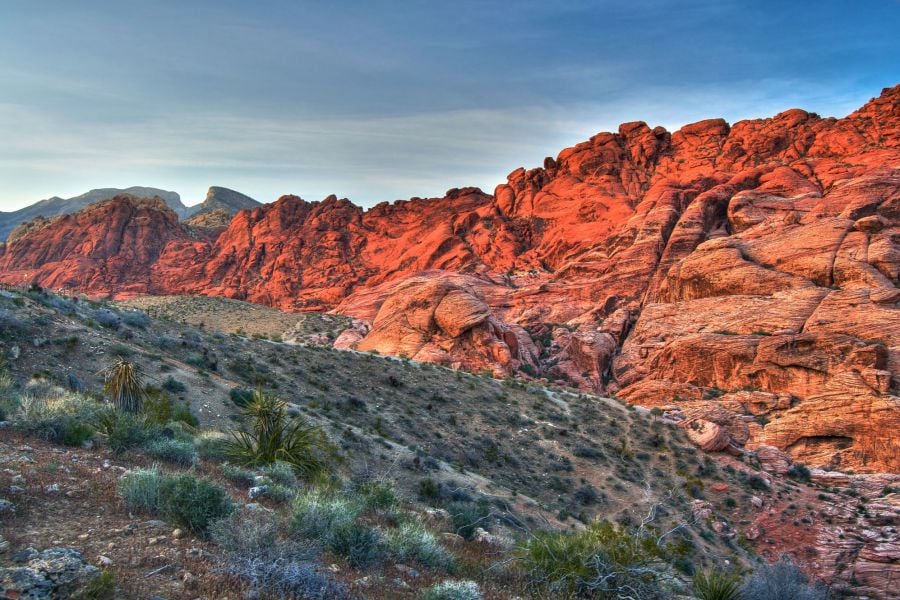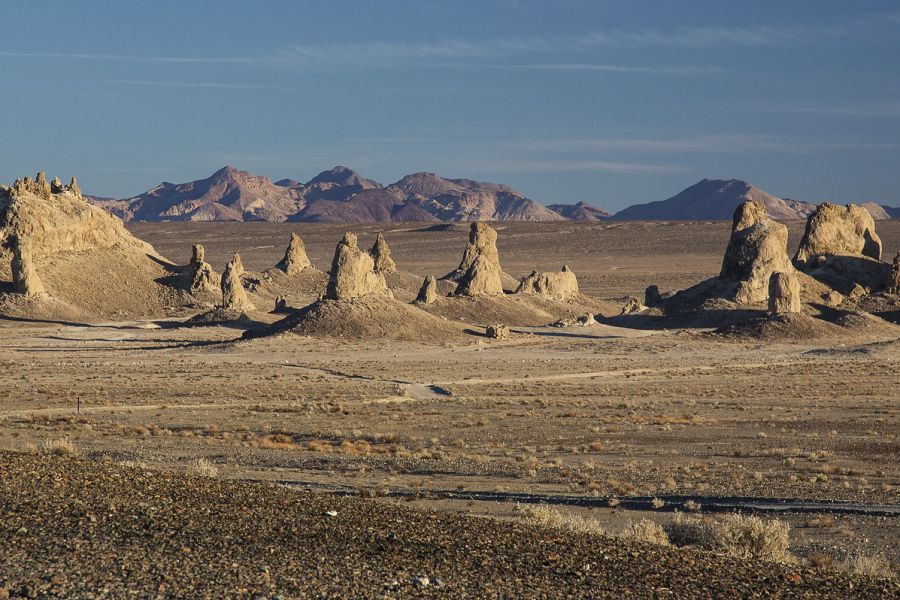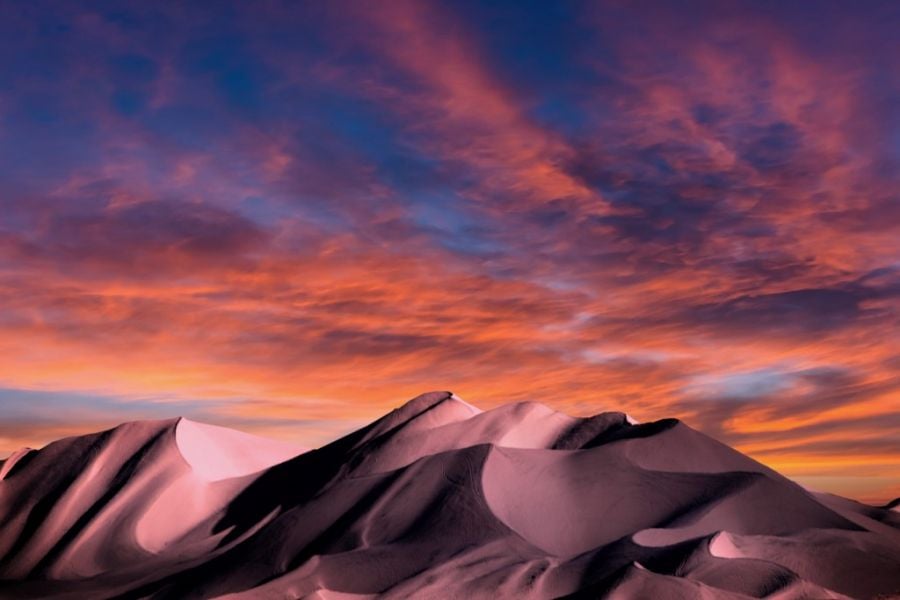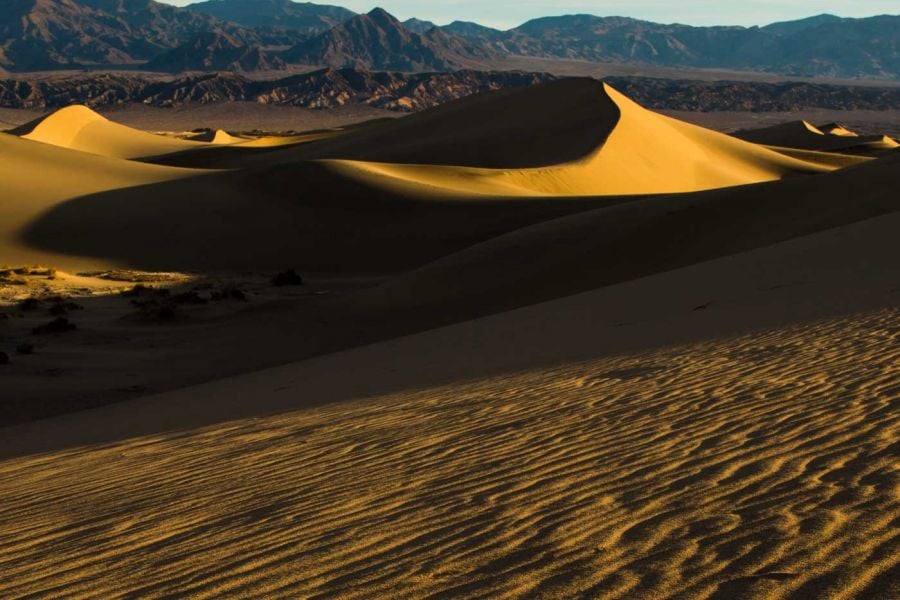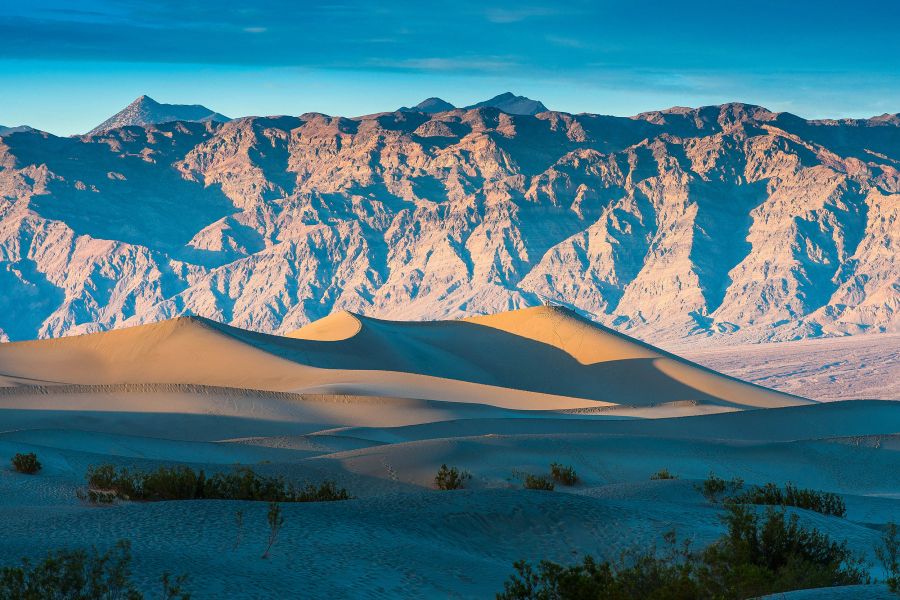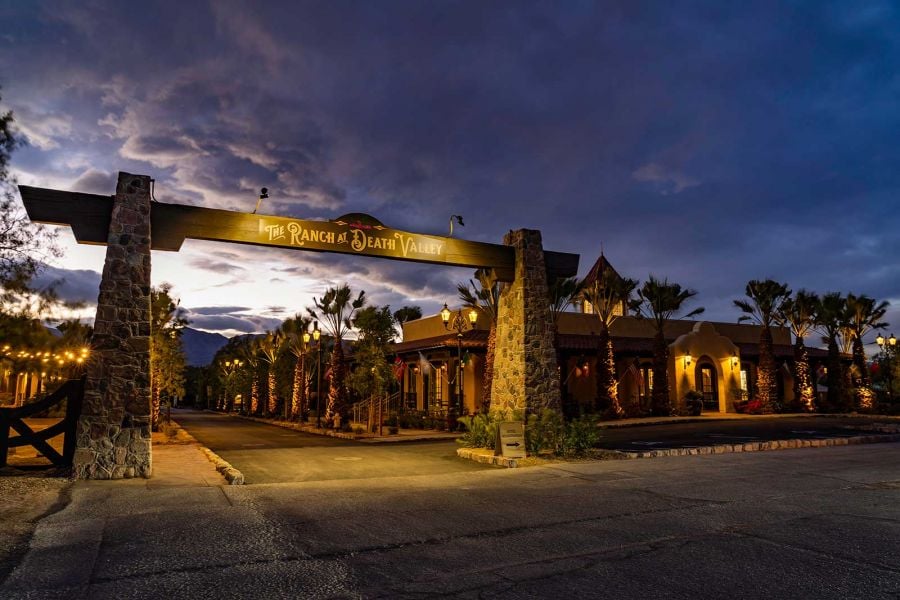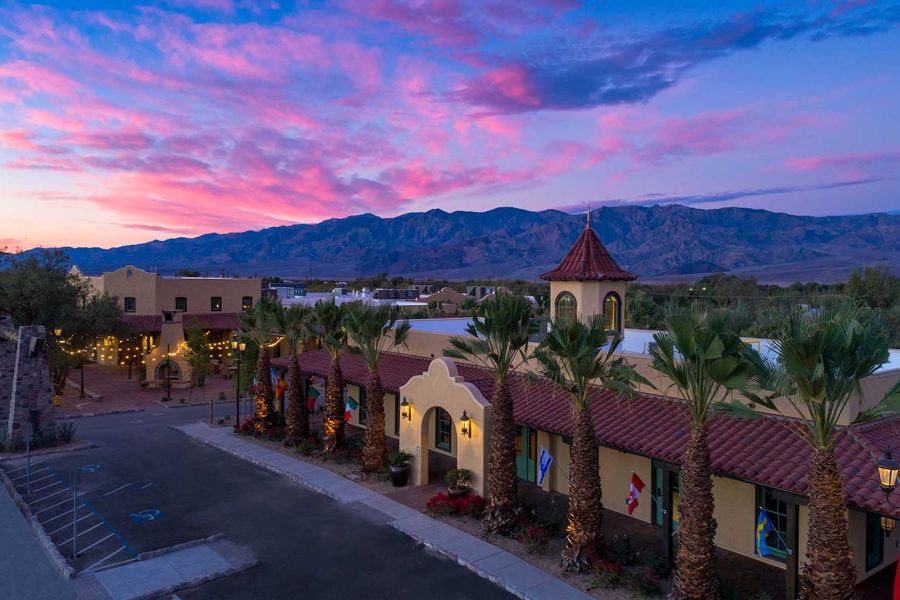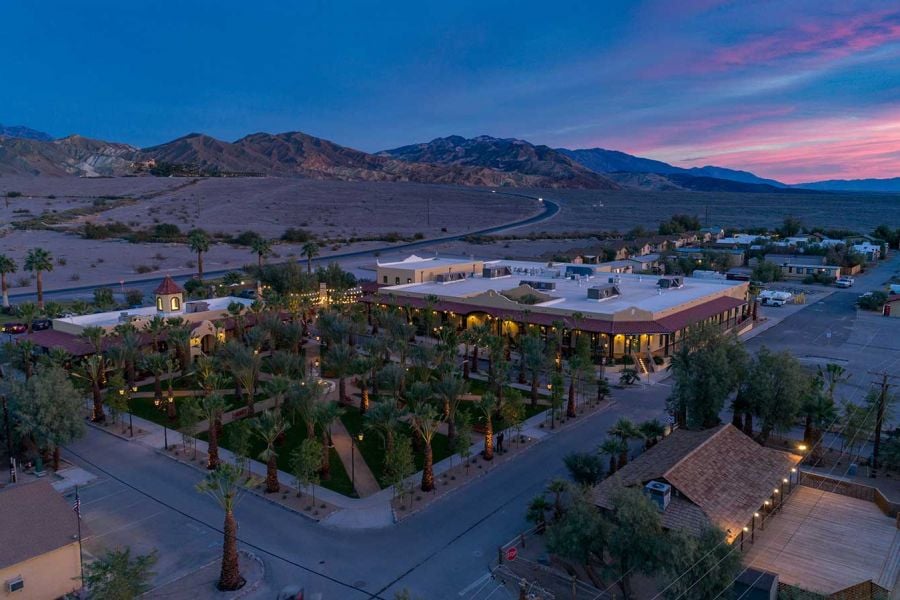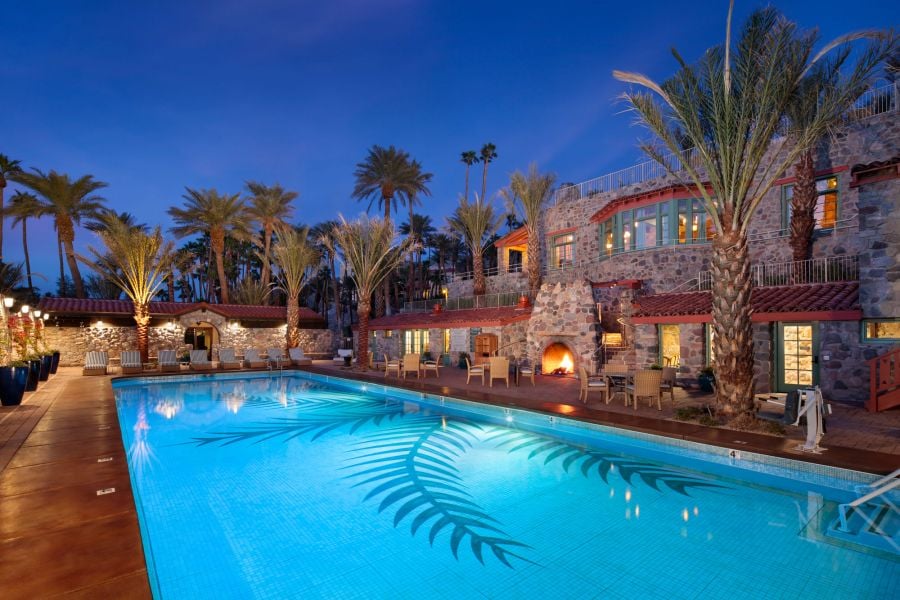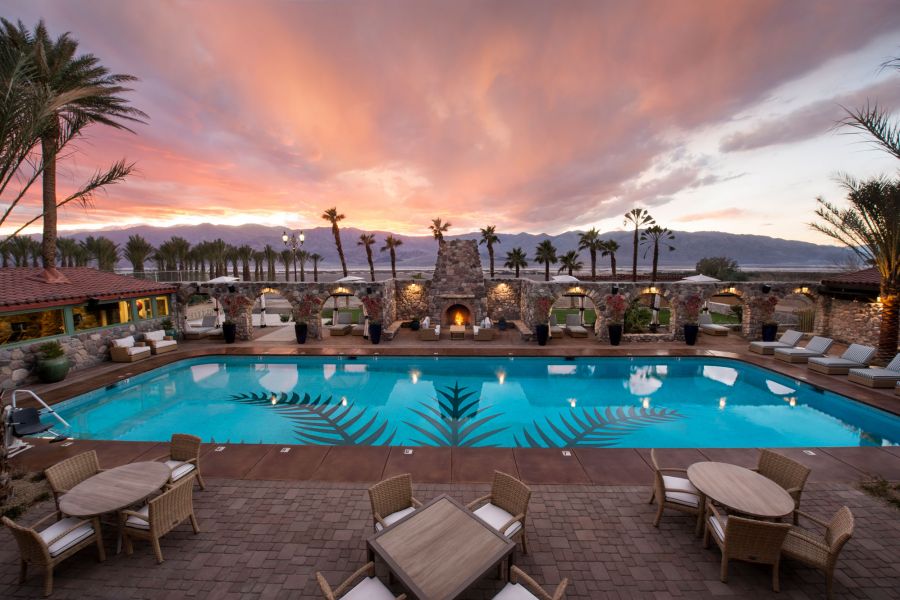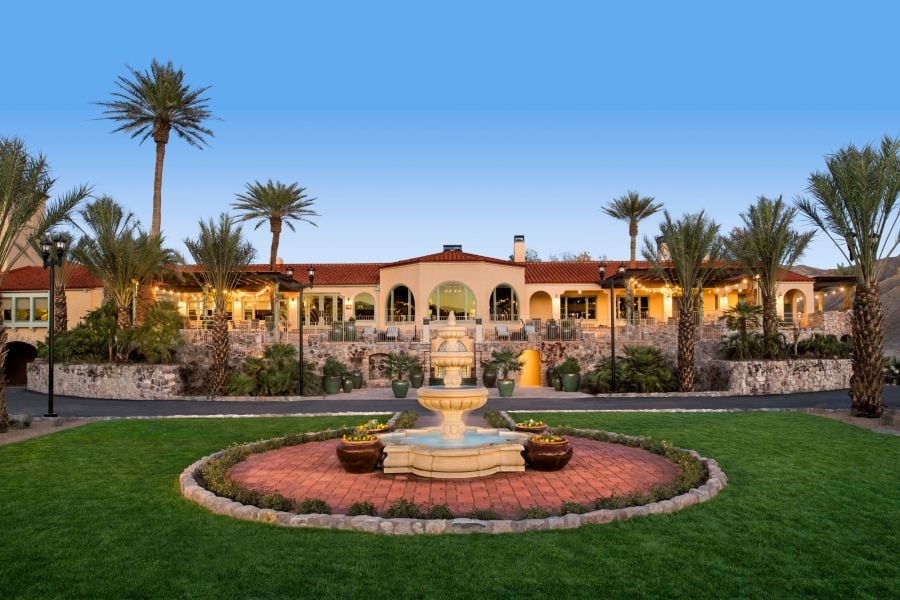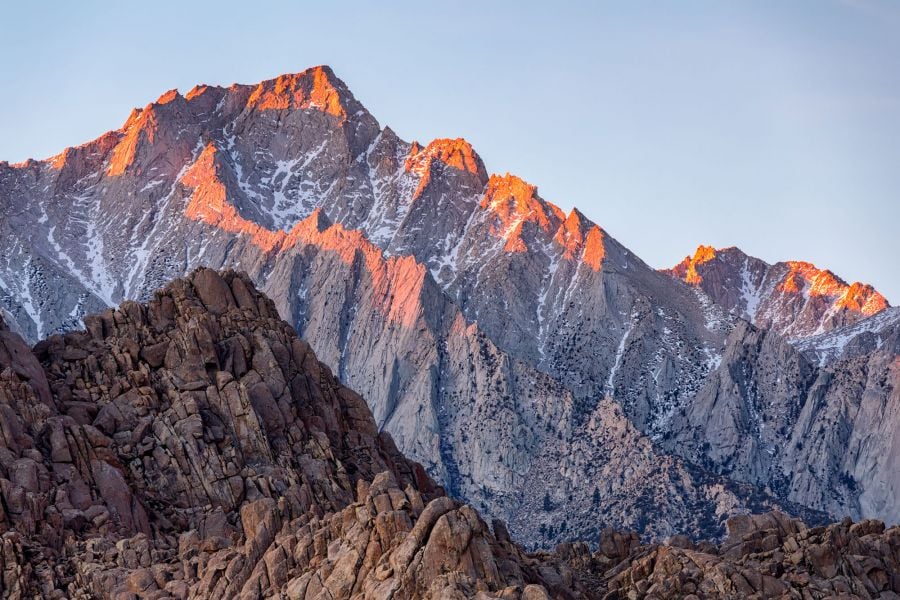Take a Road Trip from LA to The Oasis at Death Valley
From the glitz and glamour of L.A., to the vast expanse of desert in Death Valley, this is a road trip of extremes. Expect endless views, a healthy dose of history and extraordinary beauty.
Note: This is one trip where it may be best to buy and become familiar with an old-fashioned paper map. The wide-open spaces can mean sketchy cell service.
Start in Santa Monica
Minutes from downtown L.A., this happy-go-lucky, seaside enclave lures visitors with its beachy vibe and lengthy list of sun-drenched options. The pedestrian- only Third Street Promenade is a haven for shoppers, gallery-goers and for those who relish the weekly farmer’s markets.
The Santa Monica Pier, a SOCAL landmark, has been a festive and fun destination for more than a century. Wander beyond the iconic entrance gate and make your way to the historic Ferris wheel for long views of the Pacific Ocean, test your skills in the arcade and prepare for thrills on the roller coaster. Don’t miss the vintage carousel that pairs well with a stop for treats in the adjacent, old-school soda fountain. The adventuresome in your crew will want to inquire about flying trapeze classes that enable students to sample the exhilaration of this circus art at the pier.
Stop 1: Vasquez Rocks Natural Area Park and Nature Center
The spectacular, tilted sandstone formations you’ll observe in the high desert near Agua Dulce Springs, are the centerpiece of a popular hiking, picnicking, birding and equestrian area. In the late 1800s bandits on the run would hide out amid the crevices and outcroppings. In more recent times, the jagged, crimson formations have served as a colorful backdrop for movies, television shows and commercials.
Stop 2: Red Rock Canyon State Park
Located where the southernmost tip of the Sierra Nevada meets the El Paso Range, the area’s colorful canyons, cliffs, buttes and formations have long attracted outdoor enthusiasts, photographers and paleontologists. The latter have searched the cliff’s sediment, now protected, for remains of prehistoric animals—three-toed horses, saber-toothed cats, and alligator lizards.
Consider a short hike into the formations of Hagen or Red Rock Canyon or simply stretch your legs and appreciate the setting that inspired many a film location scout.
Stop 3: Trona Pinnacles
Otherworldly, you say? You might even imagine you’ve landed on another planet. But, these earthbound tufa, or calcium carbonate spires, were formed between 10,000 and 100,000 years ago, in the bottom of what was once an ancient lakebed. (It’s believed that, at one point, during the Pleistocene, the area was under 640 feet of water.)
You’ll arrive from State Highway 178, via a five-mile-long dirt road. It’s passable (but slow-going) for most vehicles unless it has recently rained. (Then, take a pass unless you have four- wheel drive.) Designated a National Natural Landmark by the U.S. Department of the Interior in 1968, the spectacular spheres, range in size from small boulder-like formations to tall, thin 140-foot monoliths.
With their relatively close proximity to LA, it’s easy to see how this geologic landscape has appealed to and inspired filmmakers, still-photographers and other creative adventurers.
Inside Death Valley National Park
Once inside Death Valley National Park there is so much to see and do. With more than 3.4 million acres, It’s the largest National Park in the lower 48. Expect 1000 miles of paved and dirt roads providing access to barren salt flats, spring-fed canyons and undulating sand dunes.
A land of extremes, you’ll explore below sea level at Badwater Basin or appreciate Telescope Peak at 11,049 feet.
Stop 4: Mesquite Flat Sand Dunes
En route to the Park Visitor’s Center in Furnace Creek and the Oasis at Death Valley, your overnight destination, consider a stop at the Mesquite Flat Sand Dunes. A photographer’s dream, the sea of sand can make for a challenging trek. Yet, if you are up for it, it’s worth the extra effort to explore beyond the parking area to steep in the solitude and fully appreciate the contours and ever-changing hues of the majestic dune system.
Stop 5: The Oasis at Death Valley
Here, within your own private oasis, inside a spectacular national park, choose to stay at The Inn, a favorite vintage hideaway where historic romance is paired with the pampering amenities of a contemporary luxury resort.
Settle in by the Hollywood-style, spring-fed pool. Sample soothing spa treatments. Linger over delicious cocktails and locally-inspired selections in the elegant Inn dining room.
Or, you may prefer to stay at The Ranch, where you’ll swim, soak, play and stay in a true Western atmosphere. Oozing authenticity, some say it’s part dude ranch, part national park lodge. We think you’ll agree it’s a perfect base camp from which to explore the park.
After a day filled with adventure, return to your comfortable accommodations just steps from an expansive lawn, a spring-fed pool, and the new Spanish-style Town Square. You won’t want to miss the good fun and fine food at The Last Kind Words Saloon!
Return: Lone Pine
On your return trip to the sprawling metropolis of Los Angeles, consider a detour to Lone Pine. It’s a western-style town that serves as a gateway for outdoor lovers interested in hiking to the summit or in the shadow of Mt. Whitney, the highest point in the contiguous U.S. It’s also known for its early trout fishing season and as a jumping off point for fishing in the Owens Valley, and the Eastern Sierra, including the Golden Trout Wilderness.
Yet another popular California filming location, you can learn more about the town’s moviemaking tradition by stopping in to The Museum of Western Film History.
Road Trip Tips
- Know that you will be traveling through a diverse climate much of which is remote desert. Make sure that you have an emergency supply of water, food, and fuel at all times.
- Know the local laws for car safety when traveling with children. For those under one year of age or under 20 lbs., a rear-facing car seat is required. For those ages one to five, at least 20 lbs., and less than 4’9, a front-facing car seat is required. For children ages five to seven and up to 4’9, a booster car seat is required. Older children should always wear seat belts.
- Bring an extra set of car keys. You could have a long wait for a locksmith.
- Leave room for spontaneity – you never know what you will come across!
